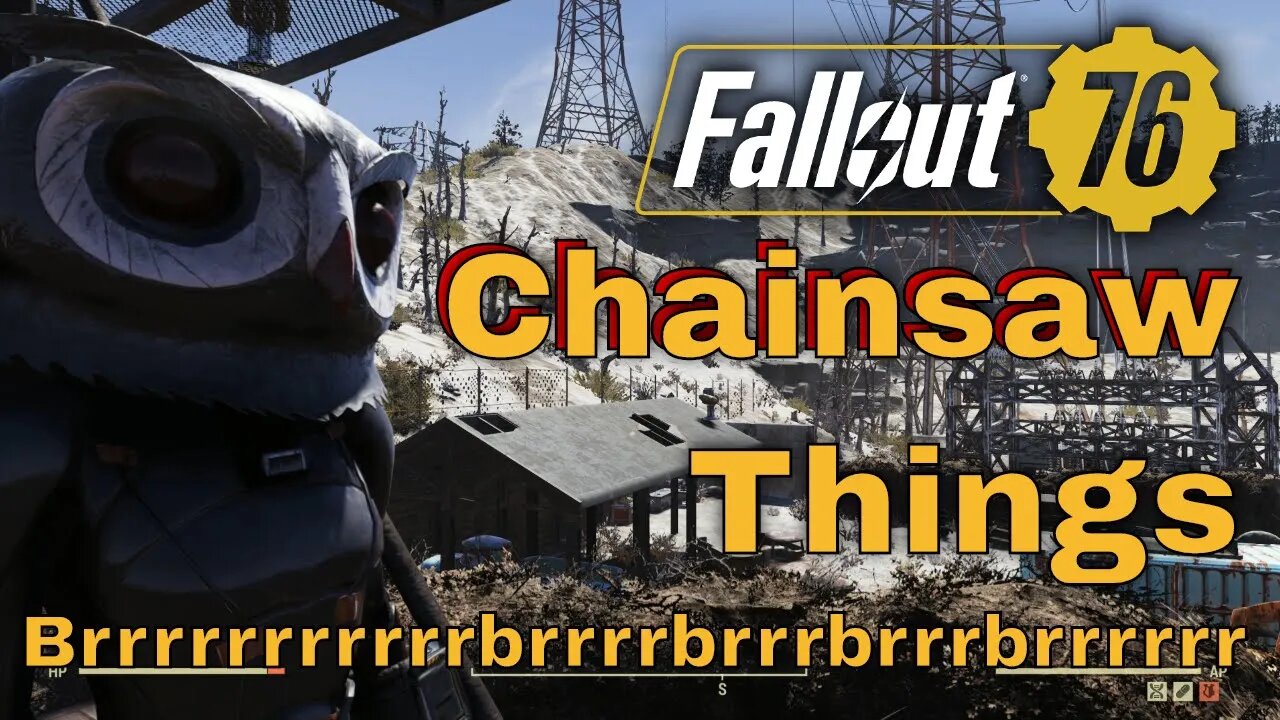Premium Only Content

Fallout 76 PSA A Chainsaw is Always Fun No Matter What
A chainsaw (alternatively spelled chain saw) is a portable, mechanical saw which cuts with a set of teeth attached to a rotating chain that runs along a guide bar. It is used in activities such as tree felling, limbing, bucking, pruning, cutting firebreaks in wildland fire suppression and harvesting of firewood. Chainsaws with specially designed bar and chain combinations have been developed as tools for use in chainsaw art and chainsaw mills. These specialized chainsaws are used for cutting concrete during construction developments. Chainsaws are sometimes used for cutting ice, for example, ice sculpture and winter swimming in Finland. Someone who uses a saw is a sawyer.
Despite safety features and protective clothing, injuries can still arise from chainsaw use, from the large forces involved in the work, from the fast-moving, sharp chain, or from the vibration and noise of the machinery.
A common accident arises from kickback, when a chain tooth at the tip of the guide bar catches on wood without cutting through it. This throws the bar (with its moving chain) in an upward arc toward the operator which can cause serious injury or even death.
Another dangerous situation occurs when heavy timber begins to fall or shift before a cut is complete. The chainsaw operator may be trapped or crushed. Similarly, timber falling in an unplanned direction may harm the operator or other workers, or an operator working at a height may fall or be injured by falling timber.
Like other hand-held machinery, the operation of chainsaws can cause vibration white finger,tinnitus or industrial deafness. These symptoms were very common when such equipment was not de-vibrated. On today's equipment there are damping elements (in rubber or steel spring) lowering these risks. Heated handles are an additional help. Newer, cordless electric chainsaws use brushless motors which further decrease noise and vibration while being lighter and easier to wield than traditional petroleum-powered models.
The risks associated with chainsaw use mean that protective clothing such as chainsaw boots, chainsaw trousers and hearing protectors are normally worn while operating them, and many jurisdictions require that operators be certified or licensed to work with chainsaws. Injury can also result if the chain breaks during operation due to poor maintenance or attempting to cut inappropriate materials.
Gasoline-powered chainsaws expose operators to harmful carbon monoxide (CO) gas, especially indoors or in partially enclosed outdoor areas.
Drop starting, or turning on a chainsaw by dropping it with one hand while pulling the starting cord with the other, is a safety violation in most states in the U.S. Keeping both hands on the saw for stability is essential for safe chainsaw use.
Safe and effective chainsaw and crosscut use on federally-administered public lands within the United States has been codified since 2016 in the Final Directive for National Saw Program[18] issued by the United States Forest Service which specifies the training, testing, and certification process for employees as well as for unpaid volunteers who operate chainsaws within public lands.
The new directive specifies Forest Service Manual (FSM) 2358 (PDF) which covers classification of sawyers, their Personal Protective Equipment (PPE) and numerous other aspects of required safety training and behavior when operating chainsaws or crosscut saws on federally-administered public lands.
-
 19:38
19:38
Lorespade
1 year ago $0.02 earnedDeed And Shares Payout Show Weekly For Entropia Universe Oct 16th 2023
392 -
 LIVE
LIVE
The Dilley Show
2 hours agoRoger Stone in Studio plus Q&A Friday! w/Author Brenden Dilley 12/27/2024
4,014 watching -
 LIVE
LIVE
The Charlie Kirk Show
1 hour agoThe Great H-1B Battle + AMA | Lomez | 12.27.24
7,986 watching -
 11:39
11:39
Russell Brand
1 day agoWhat You're Not Being Told About The Syrian War
100K188 -
 DVR
DVR
Bannons War Room
1 year agoWarRoom Live
101M -
 LIVE
LIVE
Film Threat
4 hours agoBEST AND WORST OF 2024 + SQUID GAME SEASON 2 | Film Threat Livecast
543 watching -

The Big Mig™
17 hours agoGlobal Finance Forum Powered By Genesis Gold Group
5.3K2 -
 34:38
34:38
Tudor Dixon
2 hours agoThe Changing Landscape Between Tech and Politics with Mike Benz | The Tudor Dixon Podcast
3.85K1 -
 2:23:58
2:23:58
Matt Kohrs
13 hours agoRumble's Stock Is EXPLODING!!! || The MK Show
60.9K6 -
 1:57:47
1:57:47
LFA TV
15 hours agoBOMBSHELL FINAL REPORT: BIDEN ADMIN SUPPRESSED WUHAN LAB LEAK | LIVE FROM AMERICA 12.27.24 11am EST
24.8K3